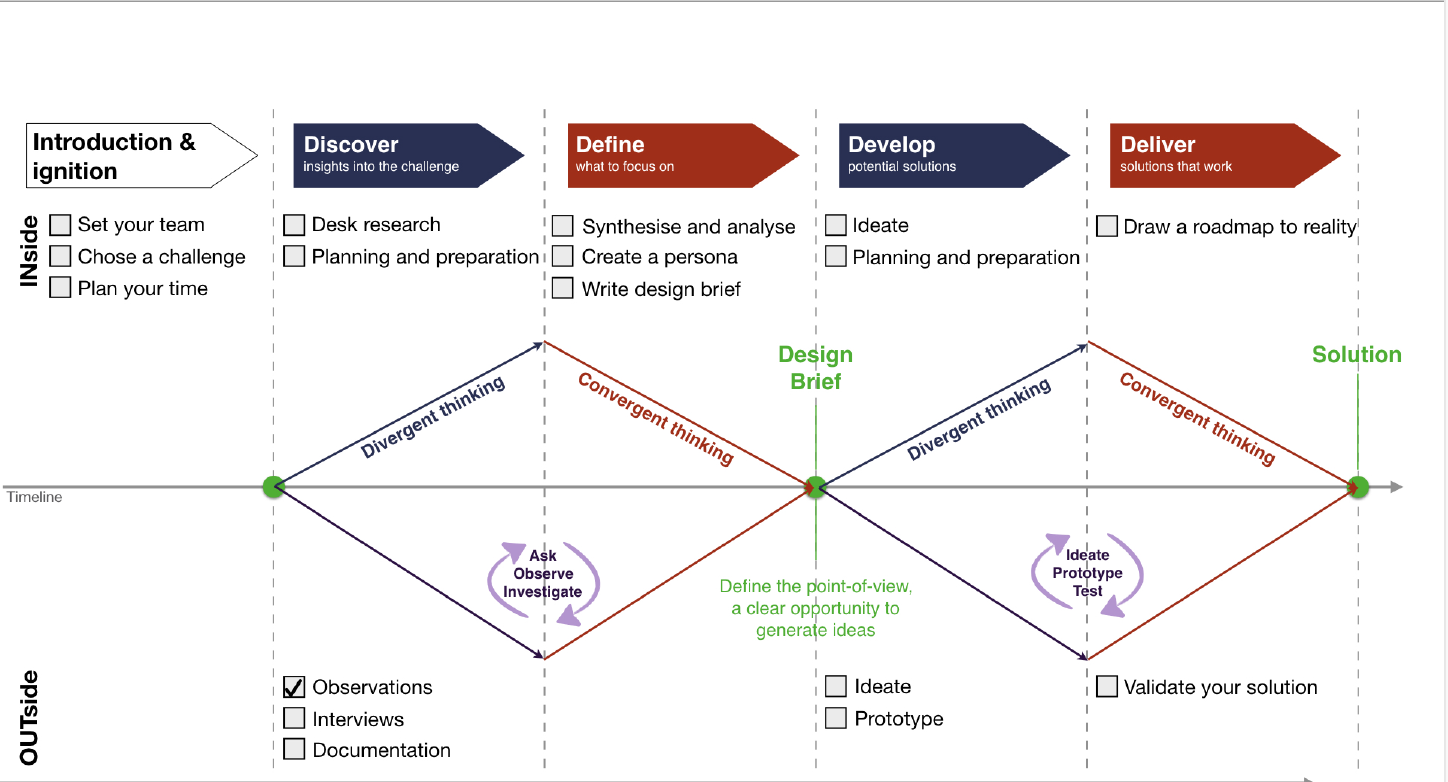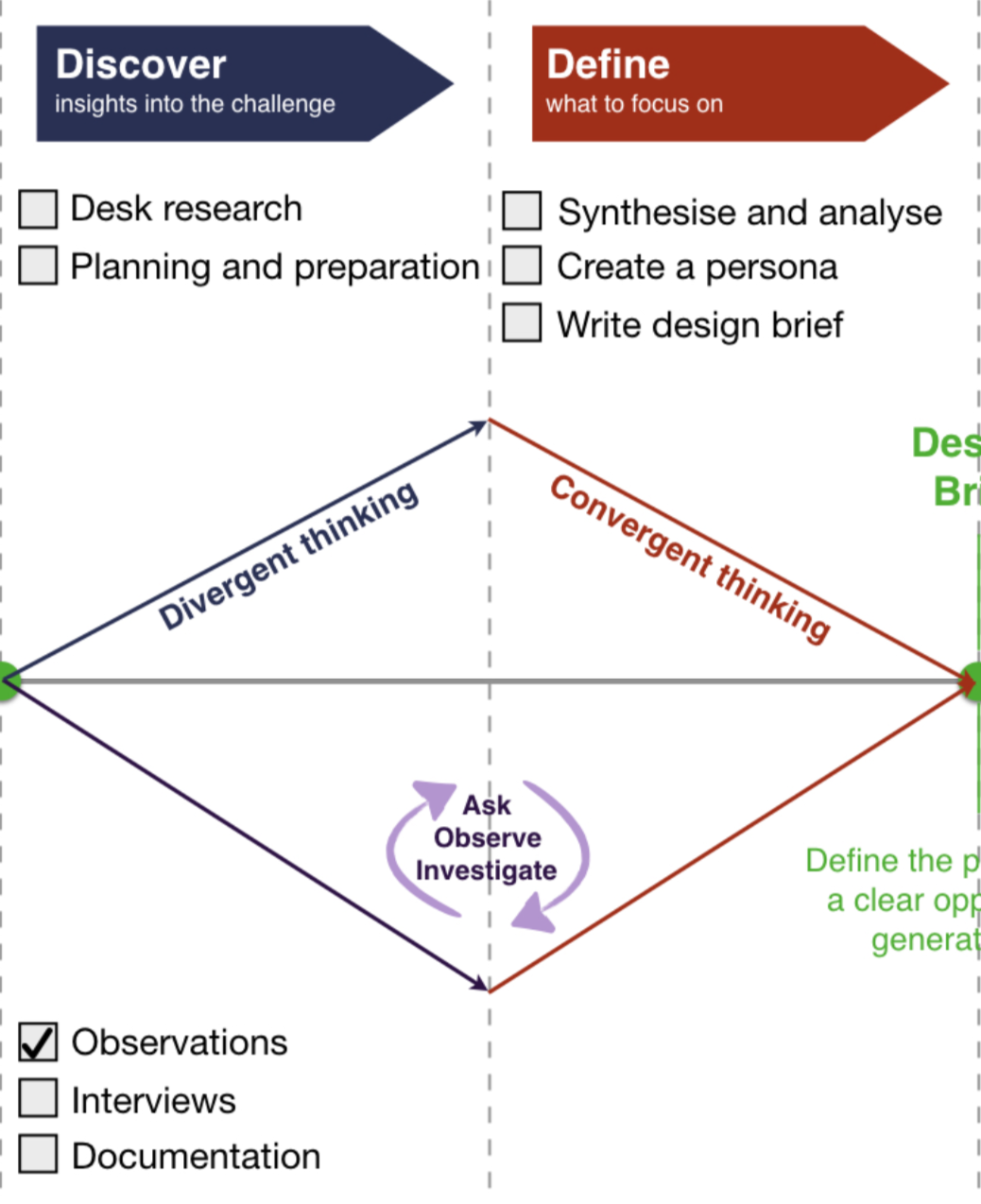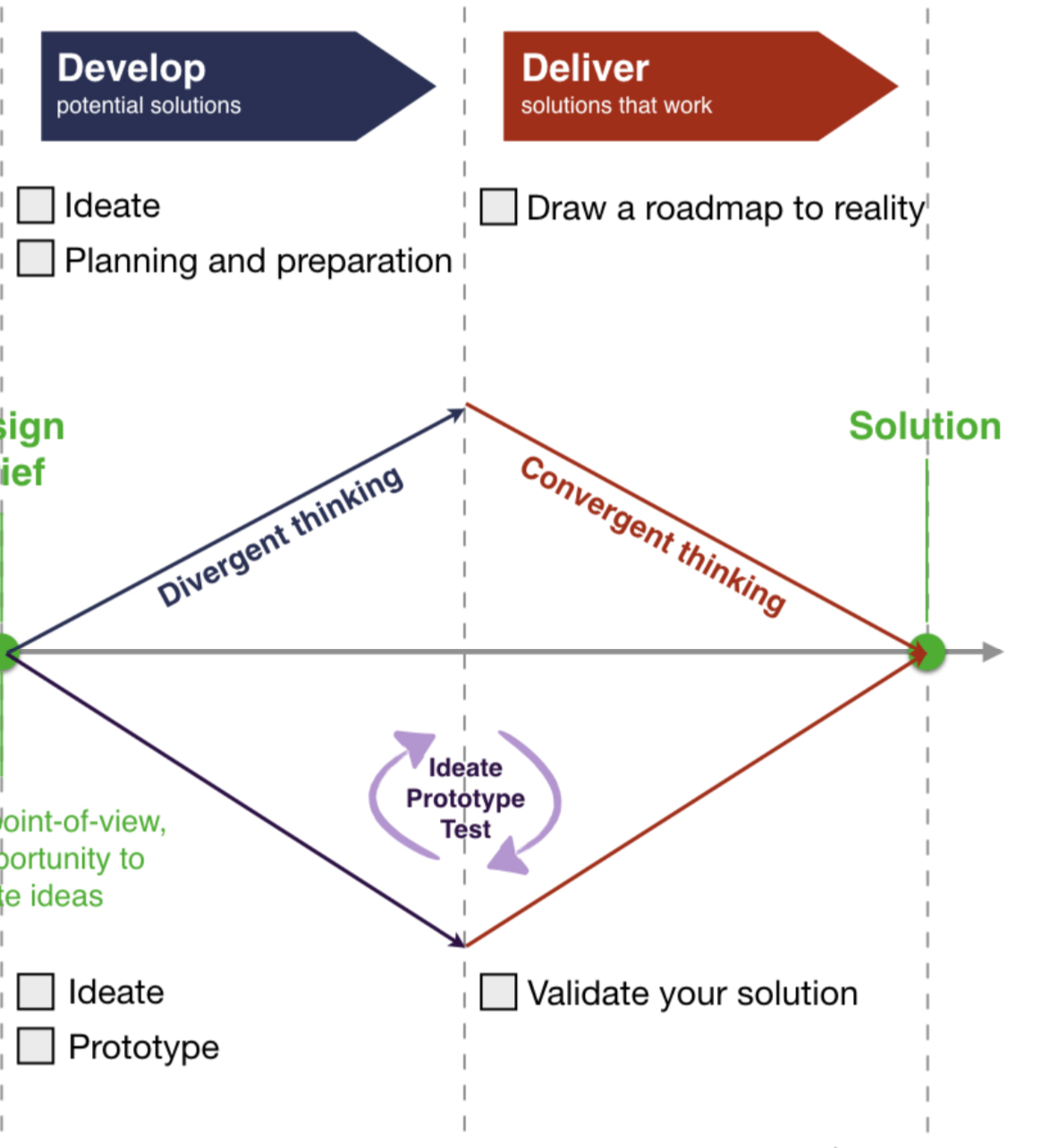3.1 The Design Lifecycle
In this lesson you will get closer to understanding the design process as a lifecycle, a process involving interrelated cognitive styles and most of all, you will get an introduction til the specific process model, The Double Diamond, which was developed by the British Design Council in 2015.
3.1.6 A Conceptual Dig into the Double Diamond

| The Double Diamond is a way-finding map |
The Double Diamond may be viewed as a way-finding map which, as do all maps, indicates where you are, and in which direction(s) you may go. As with any map, you may find that you have lost your way: and it may be at this juncture that important creative insights and new ideas may follow. Losing one's way while following a map might make one feel that the map is not accurate or well laid out. In this case, not being sure where you are at every stage of the design cycle might also allow for serendipitous insights, seeing the landscape from a different perspective and the constraint of finding and deciding on another route may open up new horizons. And this may be exactly what you need: to be a vagrant for at bit longer to keep the conversation and exploration for a solution going before returning to the last position on the map, ponder a bit, and decide on another route, or to keep going on the path because it seems the most promising.
 |
| Discover/Define Diamond |
While discovering, you are exploring openly. You enter into the challenge field in ways that is reminiscent of ethnographic methods: you go with an open mind, but not an empty head. You bring your initial research and look for certain themes or patterns, but in a lateral way: hoping to be distracted and surprised. You observe, intervene, interview, and document: on your own, with your team, and with groups of users and stakeholder. First and foremost, you are immersing yourself into the challenge field by non-judgmentally inviting divergent perspectives (spontaneous, unexpected or disharmonious), to plot the field for possible new connections and creative insights.
While defining you analyze and synthetize your exploration data, and plot the opportunities and insights from the challenge field through the discovery phase. The ideal result is a comprehensive understanding of the field’s potentials and how these are brought forward by the users: this will guide further generative research and concept development. The target of synthesizing while defining is deciding on the promising direction for generating unexpected solutions rather than conducting formal analysis.
Obviously, discovering and defining are not necessarily phases in a linear progressive process. While discovering and defining it is not uncommon to experience them as interlinked processes: iterating in cycles backwards and forwards until the scope has been narrowed to the core of the problem to be solved. The processes of discovering and defining are fundamentally about understanding the challenge, its causes and consequences. These processes can be lengthy, they will be iterative, and will require both lateral, analytic and synthetic thinking and methods. You should stay in the first diamond until you have explored in a number of ways and have exhausted the inspiration from the data collected. It is at this point that you may find (will probably find) that the problem at the core of challenge is quite different than the one that you or your stakeholder group initially thought.
After completing the first phase of the double diamond, one will typically write a creative brief. This brief presents the design focus for the next phase of developing, prototyping, and refining solutions. A creative brief (which may be delivered in text, in the form of an image board, as a video or another format) does not suggest solutions, but presents the challenge and the problem together with contexts such as user and stakeholder requirements. It may also include a presentation. The brief and accompanying presentation are important opportunities to explicate values and ethical considerations. A creative brief has several functions:
- It provides a consensus document for the team
- this is the most promising potentials we found while discovering
- this is how we defined the problem
- a chart of user patterns and selected personas
- this is how we observed our users
- these are the user profiles we will focus on in developing solutions
- and a concept for your stakeholders
- this is what we discovered;
- this is how we discovered
- this is what we generated from our discoveries
- this is our recommendations for understanding how to move forward
 |
| Develop/Deliver Diamond |
While developing you will again diverge, this time into ideating for possible solutions. While in discovering you explored openly, in developing you will experiment, prototype and test openly. This is where the ethos of making will significantly contribute to possible solutions as you begin prototyping via various materials – be it paper and cardboard, online tools, or performing roleplay. In prototyping you are testing the ways in which your concept unfolds into user processes, and this is where you will experience how material circumstances and cultural contexts matter. Developing is not about perfection. No prototype is perfect: prototyping is defined by experimentation, trying out, tinkering, testing, and failing. Don’t become frustrated by going back and and reiterating through the prototyping process. Iterating is the very point of rapid prototyping, and the benefit of failing is to re-engage in a better, and perhaps a new way. Developing is also where co-creating with a team and with user groups will test the range and feasibility of ideas for solutions.
While delivering, you are converging towards finalizing, presenting, and getting feedback on the solution being proposed. In finalizing you are refining your prototype solution and its conceptual framework, including showing its feasibility. You may be preparing reports on the findings, deliberations and decisions from your process to underpin your choice of solution. You will no doubt be preparing for a show and tell and for pitching to stakeholders and other user groups. Throughout this process you will be gathering valuable feedback on the solution proposed. While during the pitch you will be questioned on both the prototype and the concept behind it. Both presentation formats will help you refine your solution and bring it one step further on the road to reality.
References
- British Design Council on the Double Diamond Design Process: https://www.designcouncil.org.uk/news-opinion/what-framework-innovation-design-councils-evolved-double-diamond

